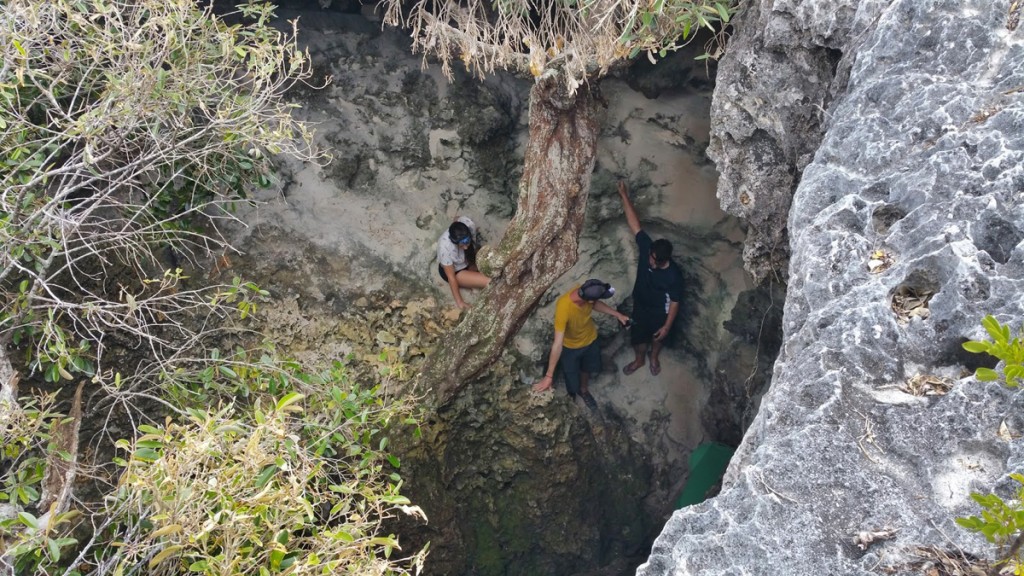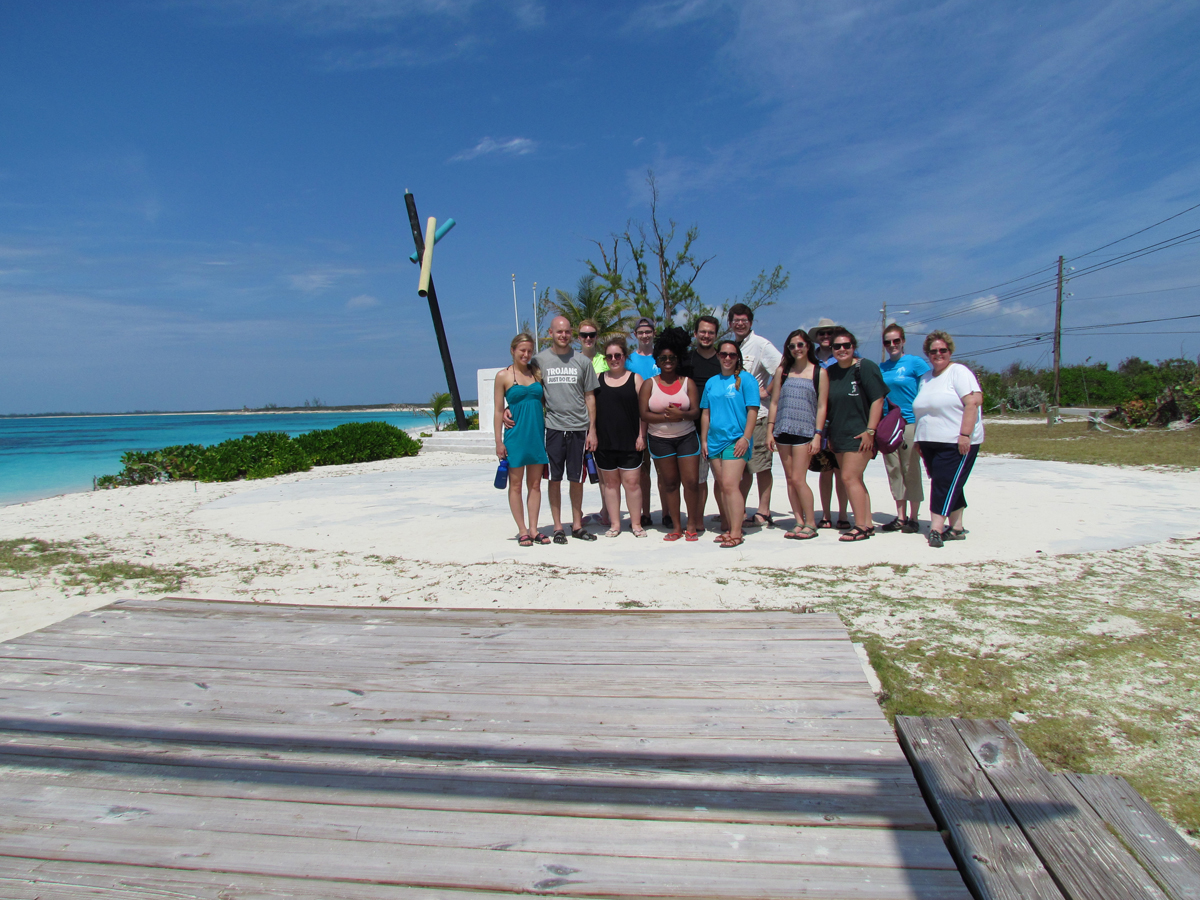UALR students visit Bahamas for spring break geology trip
Geology and ecology students explored unique rock formations and fossils, some rarely found anywhere else in the world, during a spring break trip to the Bahamas.
Twelve University of Arkansas at Little Rock students participated in the week-long trip to the island of San Salvador as part of a class taught by Drs. Laura Ruhl and René Shroat-Lewis, assistant professors of earth sciences.
The 12 UALR students who went on the March 19-25 trip include Heath Birchfield, Elizabeth Haralson, Max Hartman, Ryan Hefley, Christian Johnston, Samantha McGehee, Amber Mitchell, J.T. Poole, Candice Randall, Abigail Rogne, Alicia Stephan, and Jurnee West.
Members of the group observed the formations of different rock layers throughout the island. Students also explored the island’s caves, lakes, and fossilized reefs and dunes, as well as the youngest rock on the island, aged between 420-3,500 years.
Students studied limestone features and took samples of sediment they observed later in the lab under microscopes. The group also visited the location of what some consider to be Christopher Columbus’ landing site.
The students were able to see and study things unique to the area, such as the rare type of stromatolites at Storr’s Lake, found in only two parts of the world.
Stromatolites are layered sheet-like sedimentary rocks formed by the growth of bacteria. Most stromatolites today are fossils.
The group had to wade through hypersaline water and muddy conditions to reach them.
“We trekked through it linking arms,” said Amber Mitchell, a senior majoring in biology. “It was a little difficult with our feet sinking in the mud and stepping on the sharp remnants of stromatolites, but we eventually made it, and it was well worth it.”
Other activities included swimming and bodysurfing at Sandy Point and snorkeling at French Bay and Telephone Pole Reef. Students also encountered local wildlife such as funnel-eared bats, cerion snails, hermit crabs, and white-tailed tropical birds.

However, the trip had a few misfortunes.
“The weather is awesome, but most of us are sunburned already and going on little sleep due to hot dorms and sharing rooms with sand fleas,” said J.T. Poole, a senior double majoring in biology and ecology. “Their bites don’t itch. They just let you know when they bite, about every minute or two throughout the night.”
Halfway through the trip, Shroat-Lewis and a student had to visit a medical clinic. On the way back from another outing, their vehicle ran out of gas, but locals helped get the group back in town.
Even though there were a few difficulties, students were grateful for the opportunity to see the geology of the Bahamas.
“I have absolutely (fallen) in love with this island, and kitsch as it might be, I cannot think of a better way to spend my spring break,” said Heath Birchfield, a junior double majoring in biology and ecology.
The week-long trip is a credited course (ERSC 4353) that is available every two years through the Department of Earth Sciences. Participating students have asked for an advanced-level course next year, so Shroat-Lewis thinks it’s possible UALR might send a group annually.
To read more about the trip, visit the blog, UALR Rocks.
